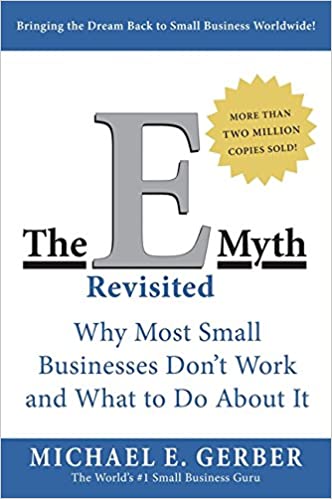The E-Myth Revisited by Michael E. Gerber - Book Review
This book is a classic that has sold over 2 million copies since first published in the 1980s. It focuses on the common problems small businesses face and the questions posed are immediately familiar to anyone who has gone down this path.
Let’s start with the positives. The book spells out the three main hats any business owner must wear:
- Technician: the person who does the actual work, aka baking pies, writing software, etc
- Manager: keeps things running smoothly, hires staff as needed, juggles logistics
- Entrepreneur: visionary who thinks ahead on what might be, advocating for change all the time
Most entrepreneurs start out as a technician of some kind, aka you are doing the work in a business run by someone else. At some point, the thoughts occurs: Hey, I could just do this on my own and so, flush with optimism, you dive into starting your own business. After a few months, the need to take on jobs far beyond your core skill emerges and it is incredibly frustrating and draining.
Gerber notes that every person has a mix of these three traits in themself–technician, manager, entrepreneur–and the trick is to recognize the necessary mix for your business and hire/delegate appropriately so you don’t become miserable. Or, as often happens, find yourself doing everything but the one thing you are good at and enjoy.
The central metaphor in the book is an imagined employee called Sarah, who runs a pie shop, and has a conversation with the author about her journey. This device is, on the whole, quite cringeworthy. It’s not good writing and gets in the way of the nuggets of good advice.
Gerber’s broad advice is to create systems for your business, to imagine the business itself as a product rather than whatever service is being offered. This is a crucial distinction that is hard to make if you haven’t worked on your own before. To that end, he recommends ways to create a system for the business so that you, the owner, don’t have to do everything yourself.
Unfortunately, the book’s age is apparent from here on out. Again, it was written in the 1980s before the internet and the “e” in the title stands for Entrepreneur, not e-commerce as must be assumed. This revised version is from 1995. The role model cited by Gerber is McDonald’s, a repeatable, franchise, “turnkey” approach. This is just super dated and not particularly relevant to today’s small businesses which must figure out how to balance online and offline effectively.
Even more annoying is that there are multiple call outs in the book to refer to the author’s websites which 404 and aren’t even up anymore. As a self-published author myself, I find it insulting frankly that the publisher can’t be bothered to update these links since this version was typeset in 1995. Not to mention the call outs for additional services are cheesy and sleazy at the same time.
Ultimately, I thought this book had a few nuggets of good advice for stepping beyond your own role and adopting the mindset of a small business owner. But the writing was clunky, the advice overall out of date, and the failure of the book’s text/layout to be updated at all over the past 25 years inexcusable.
